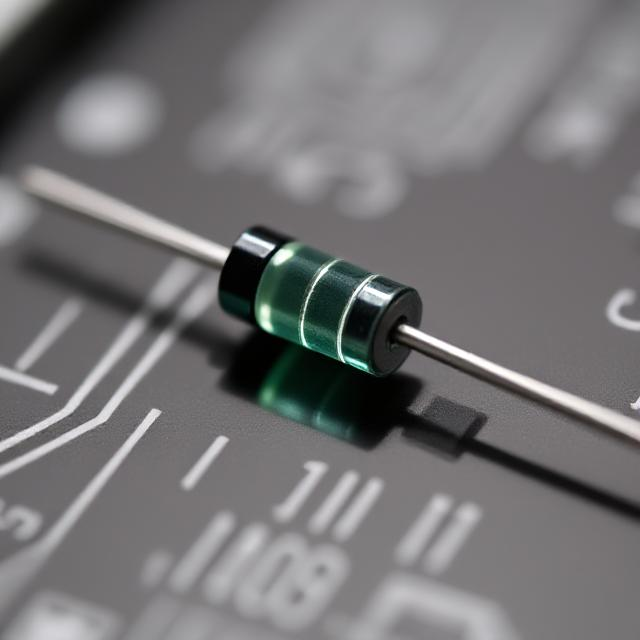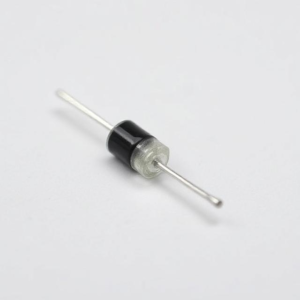Introduction to Schottky Diodes
A Schottky diode is a type of diode known for its fast switching speed and low forward voltage drop. Unlike standard diodes, Schottky diodes use a metal-semiconductor junction instead of a semiconductor-semiconductor junction. This unique construction gives Schottky diodes their characteristic features, including higher efficiency and quicker response times. They are commonly used in high-speed circuits, power supplies, and digital applications due to their rapid switching capabilities.

How Schottky Diodes Work
Schottky diodes differ from regular silicon diodes in their structure and operating principle. While standard diodes have a PN junction (formed by the contact between a p-type semiconductor and an n-type semiconductor), Schottky diodes consist of a metal-semiconductor junction.
In Schottky diodes:
-
The metal (usually made of materials like platinum, gold, or tungsten) forms the anode, and the semiconductor (typically n-type silicon) forms the cathode.
-
When a forward voltage is applied, the electron flow is much more efficient than in traditional diodes, reducing the forward voltage drop to around 0.2–0.3 volts, which is significantly lower than the 0.7 volts typically seen in silicon diodes.
This construction leads to faster response times and less energy wasted in the form of heat, which makes Schottky diodes ideal for high-speed applications.
Key Characteristics of Schottky Diodes
-
Low Forward Voltage Drop: Schottky diodes have a low forward voltage (about 0.2–0.3V), which reduces energy loss when current flows through the diode. This is much lower than the 0.7V drop seen in regular silicon diodes.
-
Fast Switching Speed: Schottky diodes have a fast response time due to their simple metal-semiconductor junction. This makes them ideal for high-speed switching circuits.
-
Low Reverse Recovery Time: Schottky diodes have a very short reverse recovery time. This means they can switch off much faster, reducing the time they spend in the non-conducting state. As a result, they are highly efficient in high-frequency applications.
-
High Efficiency: Because of their low forward voltage drop and quick switching, Schottky diodes are highly efficient. They minimize energy loss, making them well-suited for power-sensitive applications.
-
Lower Reverse Leakage Current: Schottky diodes generally exhibit higher reverse leakage currents compared to regular diodes, which can limit their use in some applications, especially in high-voltage circuits.
Applications of Schottky Diodes
Schottky diodes are widely used in electronic circuits, especially where high-speed switching and low forward voltage are important. Here are some key applications:
1. Power Supplies
-
Rectification: Schottky diodes are often used in power rectifiers, where their low forward voltage drop and fast switching help improve the efficiency of power conversion systems.
-
Switching Power Supplies (SMPS): In switch-mode power supplies, Schottky diodes are used to convert AC to DC or to regulate voltage levels due to their low loss and fast response.
2. High-Speed Circuits
-
Radio Frequency (RF) Circuits: Schottky diodes are ideal for RF circuits, as they can handle high-frequency signals and fast switching speeds. They are often used in mixers, detectors, and demodulators.
-
Digital Circuits: Due to their fast response time, Schottky diodes are commonly used in logic gates, flip-flops, and other digital circuits where quick switching is essential.
3. Voltage Clamping and Protection
-
Clamping Applications: Schottky diodes are used in voltage clamping applications to protect sensitive electronics from voltage spikes. Their low forward voltage helps limit the voltage during transients, protecting circuits from damage.
-
Transient Voltage Suppression (TVS): Schottky diodes are also used in TVS diodes to protect circuits from electrostatic discharge (ESD) and other transient voltage events.
4. Solar Power Systems
-
Solar Panel Protection: Schottky diodes are used in solar power systems to prevent reverse current flow from the battery to the solar panel during the night or low light conditions. The low voltage drop ensures minimal power loss in the system.
5. Automotive Applications
-
Battery Protection: Schottky diodes are commonly used in automotive circuits, especially for protecting batteries from reverse currents and minimizing energy losses in power conversion systems in electric vehicles.
Advantages of Schottky Diodes
-
Efficiency: Schottky diodes are more energy-efficient than traditional diodes because of their low forward voltage drop and fast switching characteristics.
-
Compact and Reliable: Schottky diodes are small and durable, making them ideal for compact electronic devices and high-reliability applications.
-
Reduced Heat Generation: Because of their low forward voltage drop, Schottky diodes generate less heat compared to standard diodes, which improves the thermal performance of circuits.
Limitations of Schottky Diodes
-
High Reverse Leakage Current: Schottky diodes have higher reverse leakage currents than standard diodes, which limits their use in high-voltage or high-precision circuits.
-
Lower Reverse Voltage Rating: Schottky diodes typically have lower reverse voltage ratings compared to regular diodes, meaning they are not suitable for all types of high-voltage applications.
-
Cost: Schottky diodes can be more expensive than regular silicon diodes, although this is often justified by their superior performance.
Conclusion
Schottky diodes are essential components in modern electronic circuits that require high-speed switching and low voltage drops. Their unique metal-semiconductor junction provides significant advantages, such as fast response times, high efficiency, and reduced power loss. These features make Schottky diodes ideal for applications in power supplies, high-frequency circuits, voltage protection, and solar power systems.











